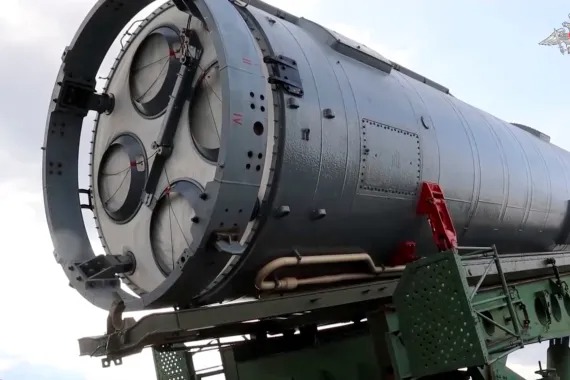Russia’s rocket forces have recently loaded an intercontinental ballistic missile armed with the nuclear-capable Avangard hypersonic glide vehicle into a launch silo in southern Russia. This development comes as a direct response to what President Vladimir Putin deems a new generation of weapons developed by the United States, marking a significant escalation in the ongoing geopolitical arms race.
The Avangard Hypersonic Glide Vehicle Unveiled
President Putin unveiled the Avangard hypersonic glide vehicle in 2018, positioning it as a strategic countermeasure to the United States’ advancements in weaponry. The Avangard, when deployed, detaches from the rocket and showcases its ability to sharply maneuver outside the rocket’s trajectory. Its remarkable feature lies in its hypersonic speeds, soaring up to 27 times the speed of sound—approximately 21,000 miles per hour or 34,000 kilometers per hour.
Missile Maneuvers in Southern Russia
The Zvezda television channel, owned by the Russian Defence Ministry, broadcasted a chilling spectacle on Thursday as a ballistic missile, equipped with the Avangard hypersonic glide vehicle, was transported to a launch silo. The footage depicted the missile being slowly raised into a vertical position before being methodically lowered into a shaft in the Orenburg region near Kazakhstan. This unsettling display underscores Russia’s unwavering commitment to enhancing its military capabilities.
Global Concerns Amidst Arms Control Erosion
As Russia and the United States, the world’s preeminent nuclear powers, express regret over the steady disintegration of arms-control treaties, the reality remains that both nations continue to develop sophisticated weapons systems, including hypersonic technology. This arms race extends beyond the two superpowers, with China actively pursuing its own advancements in military capabilities. The erosion of arms-control agreements designed to mitigate the risks of nuclear warfare is raising global concerns about the potential consequences of unchecked military innovation.
While the United States positions China as its primary competitor and Russia as a significant nation-state threat, President Joe Biden frames the 21st century as an existential contest between democracies and autocracies. The geopolitical landscape is undergoing a profound shift as these nuclear powers grapple with changing power dynamics and emerging threats.
















